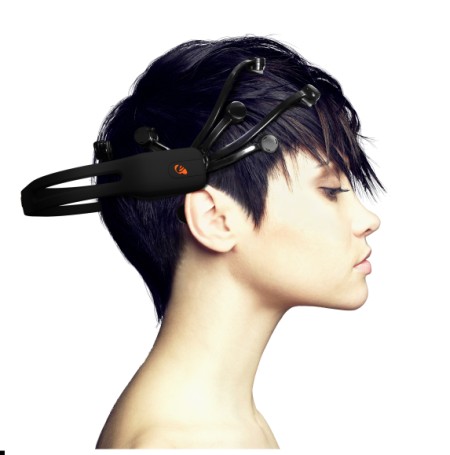IBM and Xerox predict brain-controlled apps will head to smartphones

Fancy calling your friends using the power of thought? One day there could be an app for that.
Across the world researchers are developing smartphone apps that are controlled using brainwaves, according to an IBM and Xerox paper summarising the state-of-the-art in Brain-Computer Interfaces (BCI).
Applications include brain-driven software for dialling numbers, as well as for messaging and calling contacts.
Rather than relying on a touchscreen tap to trigger an action, such software listens for specific patterns of brain activity. These peaks in electrical activity in the brain, known as P300 signals, are detected by a Electroencephalogram (EEG) that is worn on the user's head.
Brain-controlled software has been made more feasible by the development of lightweight EEG readers that can communicate with phones wirelessly, such as the Emotiv headset.
The problem facing BCI apps is accuracy. The IBM and Xerox paper highlights the Neurophone, a brain-controlled system developed at Cornell University that allows users to call contacts using an Emotiv headset and an iPhone.
Neurophone works by flashing images of each of the user's contacts in turn, detecting the P300 signal when the desired contact flashes and then making the call.
The system's ability to detect the correct contact is described as promising but less reliable than a wink-controlled interface for the device - which managed 92 to 95 percent accuracy.
Similarly, a brain-controlled app that allows users to write Chinese language messages using a virtual keyboard achieved a peak accuracy of just over 80 percent. However, in tests the average accuracy of the system, which used the Neuroscan QuickCap to measure brainwaves, was just under 70 percent.
Accuracy of systems that detect P300 signals falls when users are performing physical tasks that reduce their focus. To bring accuracy levels up, researchers suggest that brain-control signals could be augmented by other data, such as head and eye tracking. The choice presented to the user could also be refined - for example the list of suggested contacts to call could be restricted to those dialled most frequently.
The paper concludes on an optimistic note: "The use of BCI for mobile holds promise, as it would be useful for developing both assistive and general entertainment technology for the evolving mobile user.
"Developments in the fields of computational neurology, signal processing, machine learning coupled with the increasing availability of computational power on the mobile device along with cloud storage and processing paves the way for development of more BCI-based mobile applications for the ordinary user."
Read more
- Paraplegic man in brain-controlled exoskeleton kicked off World Cup
- Brain implants could control computers by 2020, Intel says
- Scientists claim success in remotely controlling the human brain